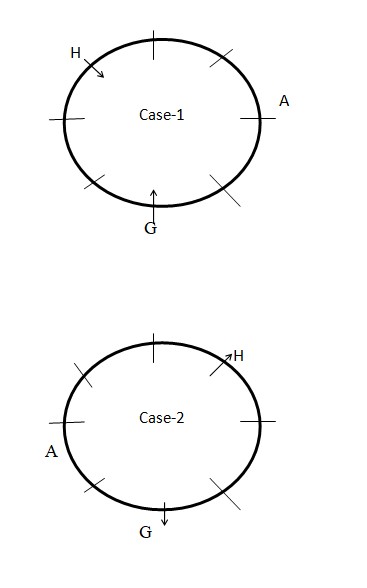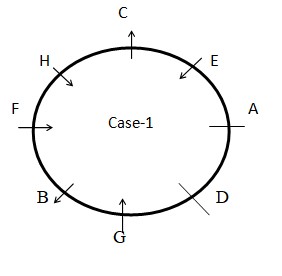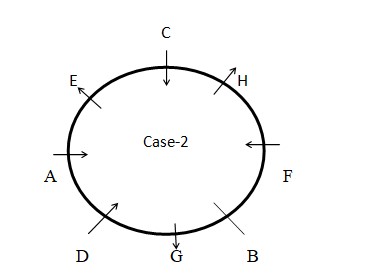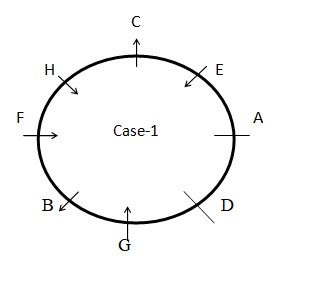Question
Who sits third to the left of one, who sits immediate
right of B? Study the following information to answer the given questions: Eight persons A, B, C, D, E, F, G and H sit around the circular table. Some of them face towards the centre while some face away from the centre. Not more than two adjacent persons face in same direction. F faces towards the centre and does not sit adjacent to G. A sits second to the right of G. C and E are immediate right of each other. Two persons sit between H and G. D and A face in same direction. Both G and H face in same direction. F and D do not face in same direction. A and H are not adjacent to each other. E sits opposite to B, who does not sit adjacnet to A.Solution
A sits second to the right of G. Two persons sit between H and G.Both G and H face in same direction. A and H are not adjacent to each other  C and E are immediate right of each other. E sits opposite to B, who does not sit adjacnet to A. F faces towards the centre and does not sit adjacent to G. D and A face in same direction. Not more than two adjacent persons face in same direction.
C and E are immediate right of each other. E sits opposite to B, who does not sit adjacnet to A. F faces towards the centre and does not sit adjacent to G. D and A face in same direction. Not more than two adjacent persons face in same direction. 
 F and D do not face in same direction. So, case2won’t be possible
F and D do not face in same direction. So, case2won’t be possible 
Which of the following statements is INCORRECT regarding Indian Constitution articles?
Recently new Crab Species named Ghatiana Dwivarna has been discovered from Which state?
When was the first ASEAN Defence Ministers’ Meeting-Plus (ADMM-Plus) held?
How many infants receive free vaccines annually under India’s Universal Immunization Programme (UIP)?
Which ministry has recently launched the Udyam Assist Platform (UAP) to bring informal micro enterprises in the country into the formal fold and enable ...
The International Bank for Reconstruction and Development (IBRD), has successfully priced a 5-year bond in Great British Pound sterling (GBP) set to mat...
Recently Tata Motors has bagged an order for 1,500 electric buses from which State/UT’s Transport Corporation as part of Convergence Energy Servic...
Who holds the record for the most swims across the English Channel?
When will the first ever I2U2 virtual meet be held?
Maruti to invest Rs 11,000 cr to set up largest facility at 800-acre site in which of the following states?
Relevant for Exams:


